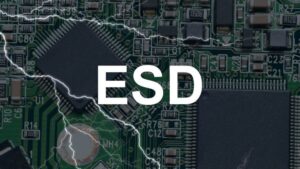Reverse Engineering Printed Circuit Board Anti-ESD Schematic Diagram can help us to improve the performance of PCB board’s anti-esd capability, through component relocation or replacement to achive the purpose;

Reverse Engineering Printed Circuit Board Anti-ESD Schematic Diagram can help us to improve the performance of PCB board’s anti-esd capability, through component relocation or replacement to achive the purpos
Static electricity from the human body, the environment, and even inside electronic equipment can cause various damages to precision semiconductor chips, such as penetrating the thin insulating layer inside the components;
Destroy the gates of MOSFETs and CMOS components; the triggers in CMOS devices are locked; short-circuit the reverse-biased PN junction; short-circuit the forward-biased PN junction; melt the welding wire or aluminum wire inside the active device.
In order to eliminate electrostatic discharge (ESD) interference and damage to electronic equipment, a variety of technical measures need to be taken to prevent it.
In the redesign of PCB board layout, the anti-ESD cloning of the PCB can be realized through layering, proper layout and installation.
In the design process, the vast majority of printed circuit board design modifications can be limited to the addition or reduction of components through prediction. By adjusting the PCB layout and routing, ESD can be well prevented. The following are some common precautions.






